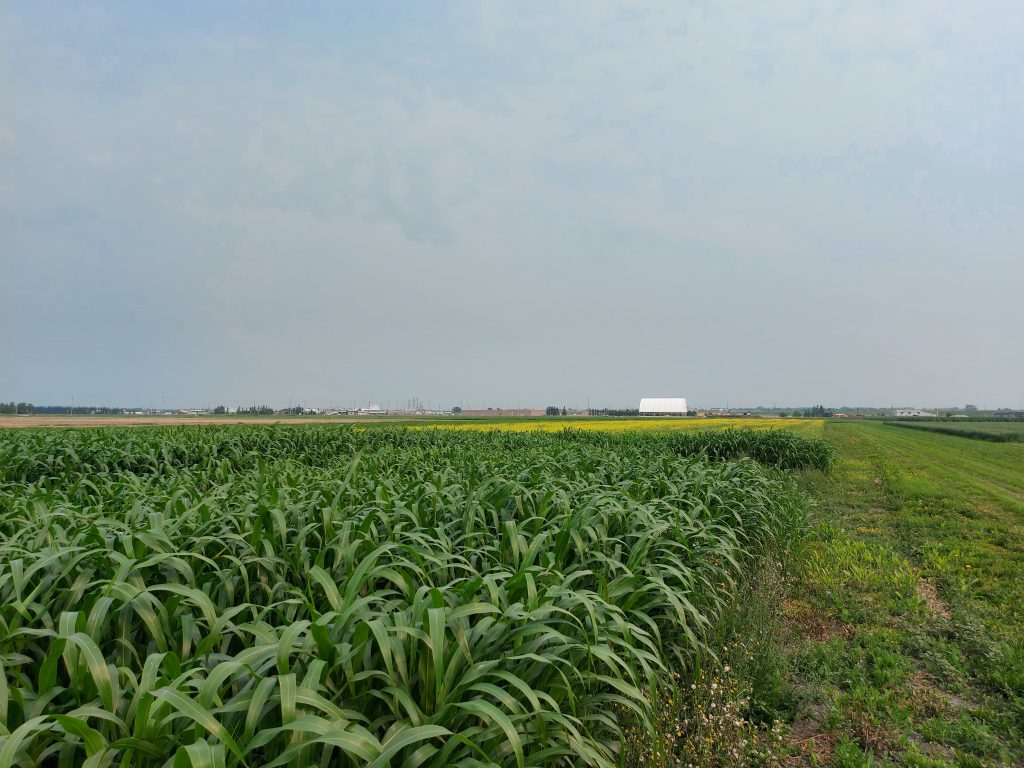Written by: Cameron Ford, NOFIA, on behalf of Northeastern Ontario Regional SCIA
In recent decades, the effects of arbuscular mycorrhizal fungi (AMF) on crop growth and soil health have been studied as a means to increase productivity and reduce the need for other fertilizer inputs. Mycorrhizae are fungi that naturally occur in soil and form a symbiotic network with the roots of plants, giving them access to water and nutrients in the soil that they otherwise would not be able to reach. However, these beneficial fungal networks can be broken by frequent soil disturbances, especially tilling. To counter this, there are commercially available mycorrhizal inoculants which are intended to jumpstart these networks and restore their positive effects.
A research project entitled ‘On-farm augmentation of indigenous mycorrhizal inoculum for more sustainable and profitable canola-soybean rotations’ is assessing the value of these commercial inoculants and comparing them to locally sourced, or indigenous, mycorrhizal fungi. This research is being conducted at sites in Algoma and Temiskaming districts in northern Ontario and is led by Professor Pedro Antunes of Algoma University.

Photo courtesy of OCRC-NL Agronomy Team. Sorghum-Sudan grass grows at Ontario Crops Research Centre –New Liskeard. The crop was used to foster and collect mycorrhizal fungi for use in testing indigenous fungal strains against commercial strains.
One of the issues being addressed in this project is that commercially available mycorrhizal products are generally composed of only one or two fungal strains, and these strains may actually displace even more beneficial indigenous strains when applied to soil, greatly reducing the value of the application. Previous research has shown that fungi can adapt to local conditions, and as such, pre-existing indigenous strains may be more beneficial to crops than a foreign strain that is introduced.
This past summer was the first year of the project and it was used to collect the indigenous AMF from the research sites for use in the next stage of the trial. Sorghum-Sudan grass is known to be highly interactive with AMF, providing the fungi with an environment to grow and propagate. Sorghum-Sudan grass was grown in field trial locations for this project and samples of the indigenous AMF that occurred at each site were collected. This collection was done by removing the aboveground mass of the Sorghum-Sudan grass, discing the field, and then using harrows to collect the Sorghum root material. The collected roots and soil will contain AMF indigenous to that field and, when stored in the right conditions, will still be viable for use in planting next spring.
Plots of canola were also grown during the past summer. Canola, the largest cash crop in northern Ontario, does not form associations with mycorrhizal fungi which causes the AMF populations in those fields to decrease. This effect reduces the overall health of the field, and crops grown in rotation after canola have been shown to suffer as a result. This research project will attempt to find a way to counteract this effect by applying the commercial and indigenous AMF inoculants to plots of soybeans grown in last season’s canola plots. Control plots will also be grown without an AMF treatment for comparison.
To keep up to date with this project, you can follow Professor Antunes on Twitter at @1pantunes.